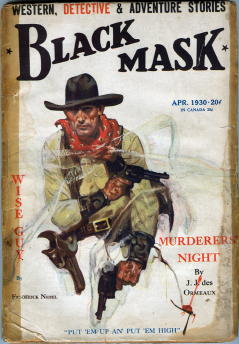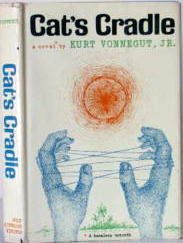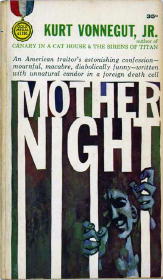Tue 25 Sep 2007
The Question Without an Answer: WHAT IS NOIR?
Posted by Steve under General , Personal Notes1 Comment
Forget the heading of this post for a minute. I have some personal comments to make first.
Over the past couple of weeks, I’ve been tied up with matters not involving the blog and blog-related activities, and so (as you may have noticed) I’ve not been posting here nearly as often as I did, for example, over the summer. Nor are things are very likely to improve, I’m sorry to say. As far ahead as I can see, I’m not going to have nearly as much free time as I’ve had up to now to sit here at the computer and provide with you anything better for reading material than this, what you’re reading right now.
Neither have I been able to keep up with comments that have been left, nor have I been replying in any kind of quick fashion to email questions that have been asked, and I apologize. I’m deeply sorry about that. If I’ve left you hanging in such a fashion, I probably haven’t forgotten about you, if that’s any satisfaction.
Time is, as one fine philosopher has said, what keeps everything from happening at once. On the other hand, there’s a mathematical principle that says that there’s only a finite amount of it. You can slice it as thin as you want, but the wafers will still add up to only 24 hours a day.
Besides helping John Pugmire recently with his Locked Rooms Library project, now finished, I’m still working on Al Hubin’s Addenda to Crime Fiction IV and as often as I can get to it. To me, it’s increasingly fascinating stuff. I also have another installment of “Maps in Mysteries” to post, and Victor Berch and I are working on a couple of illustrated checklists that should prove interesting.
Besides reviews from Mary Reed, which have nearly unforgivably been piling up, I have tons of my own to post, all old, as I’ve not written but one since March. I’d also like to get back to more “Compleat” profiles of authors, but unless something drastic changes, don’t look for another one for a couple of weeks more. Unless it’s a short one.
And you’ll see them here, eventually. But I guess that’s going to be the key word for a while. Eventually!
In the meantime, let me plug one of the best sources around for in-depth mystery-related news on the Internet, J. Kingston Pierce’s The Rap Sheet. Let me take that back. In my opinion, it’s the best, and I say that not only because Jeff’s recently given a big publicity boost to John Pugmire’s “Locked Rooms” article. Read the rest of the items on his blog, actually a collective effort, and you’ll see exactly what I mean. It is to enjoy, every post he makes.
While naming some but not others, I mean no slight to those not named, but Bill Crider’s Pop Culture blog is another that’s worth visiting every day, and I mean every day and usually several times a day. A post entitled “Memory Lane” proved to be a stroll down exactly that, a short history of mystery fandom through one fan’s eyes, Bill’s. While he and I have met in person only once, I think I was with him over the past 30 years, in parallel and sometimes coinciding paths, most of the way. Don’t miss it.
I’ve also just left some comments on Vince Keenan’s blog, this time perhaps stirring up a figurative hornet’s nest of controversy, unless everyone’s tired of arguing over the Question Without an Answer: “What is Noir?” Everybody knows, but nobody can convince anyone else.



